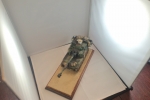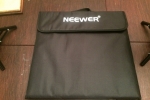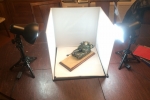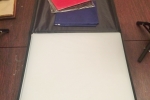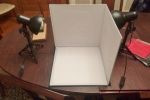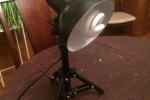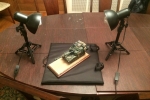Photographing Your Models
Even today's smart phones usually have cameras that are as good or even better than the SLR (single lens reflex) models of the 80s when I was going around the globe for magazines and newspapers. That's because the resolution is so sharp, today's cell phone cameras capture as much information or more than yesterday's film.
Today's cameras also operate a lower light levels than in the past, so you often can take very good photos indoors without a flash. Back in the day, we needed huge banks of strobe lights (flashes) or else large, hot "klieg" lights like those used on movie sets even now. Film had to be filtered for color balance, while today's digital cameras compensate for the color temperature of the light source (warm for indoor lights, cool for fluorescent, in the middle for natural sunlight).
But even today's amazing digital cameras work better in bright light than in dim, and no software has yet been invented that can get rid of shadows and hot spots (called "flare"). That's where an inexpensive light box setup can mean all the difference in your photos.
The photos here were all taken with an iPhone 5 camera, and the set-up is relatively inexpensive (around $60 total). The lights are from Cowboy Studio (sold on Amazon.com) and the light box includes four backgrounds (black, blue, red and white). As you can see, it makes taking shadow-less photos almost as easy as point & shoot.





